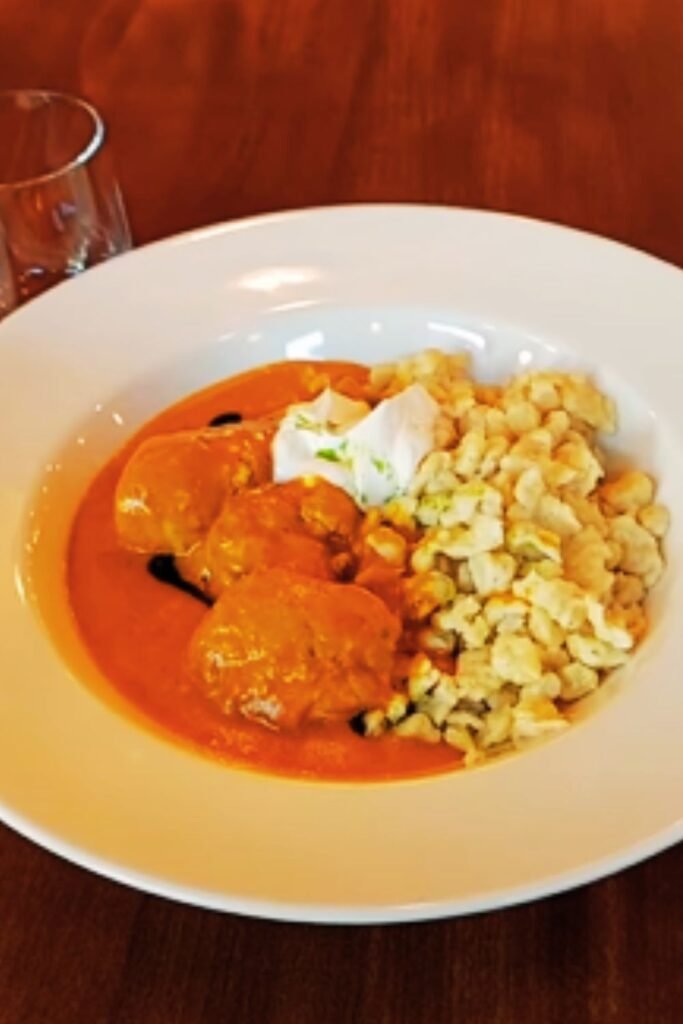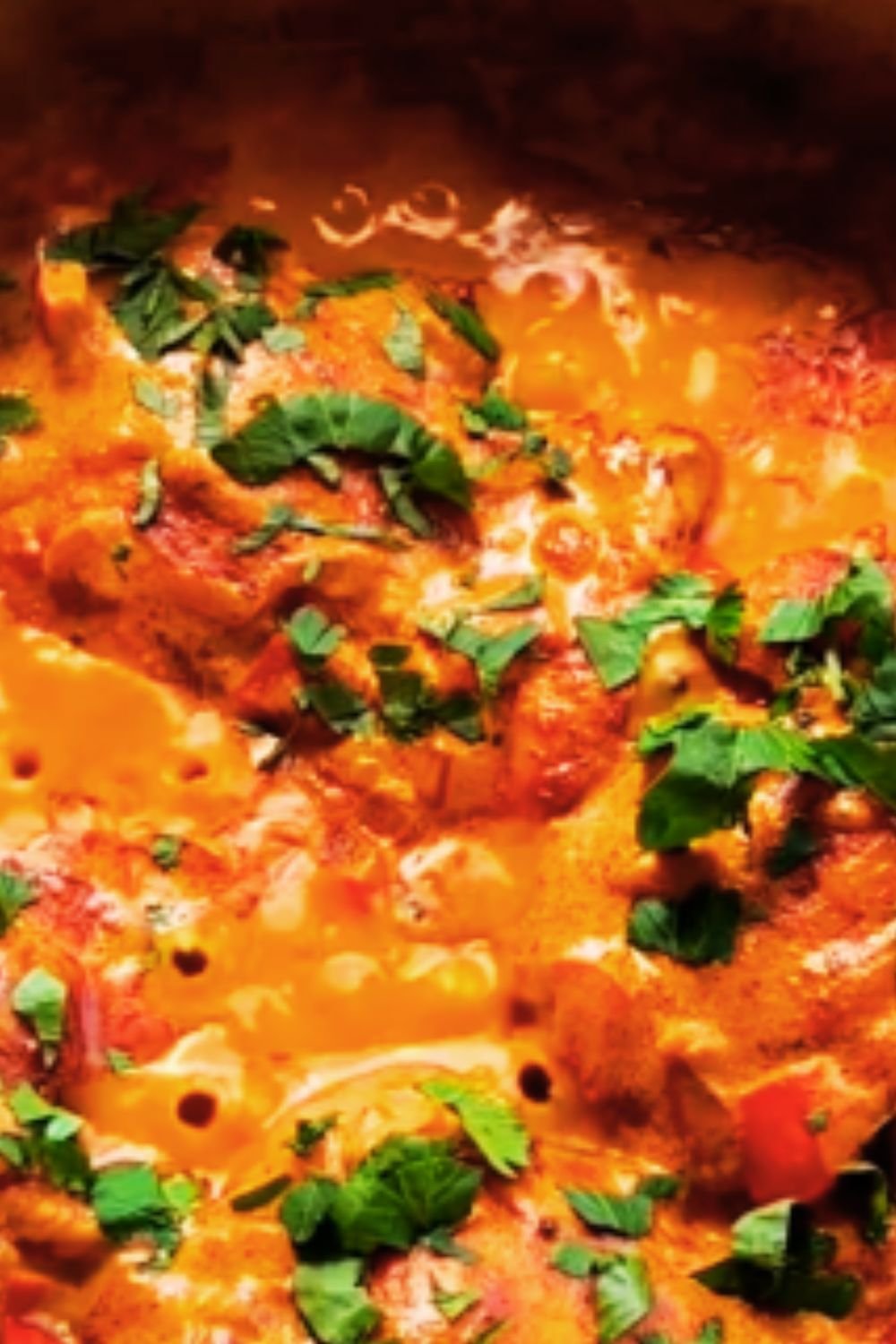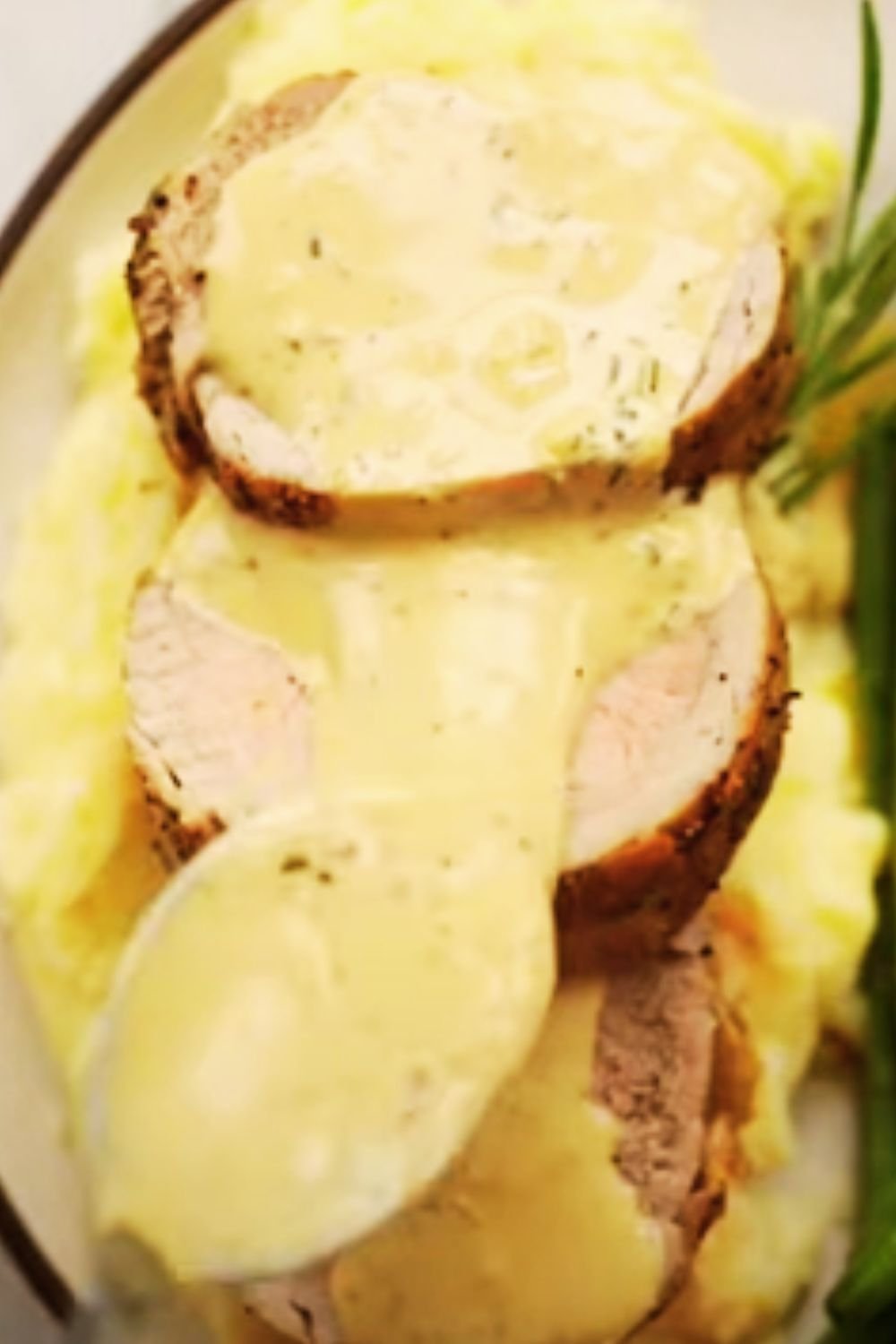There are few dishes that capture the essence of Hungarian cuisine quite like Chicken Paprikash. When I first traveled to Budapest years ago, this humble yet magnificent dish changed my understanding of what comfort food could be. The rich, velvety sauce with its vibrant red hue, tender chicken that falls off the bone, and the distinctive flavor of Hungarian paprika all come together to create something truly magical.
In my culinary journey, I’ve prepared this iconic dish countless times, tweaking and refining my technique. Today, I’m sharing my comprehensive guide to creating authentic Hungarian Chicken Paprikash that would make any Hungarian grandmother proud. From selecting the right paprika to achieving that perfect creamy sauce consistency, this article covers everything you need to know.
The Rich History of Chicken Paprikash
Chicken Paprikash (or “Paprikás Csirke” in Hungarian) has been a cornerstone of Hungarian cuisine for centuries. This dish emerged in the southern regions of Hungary where paprika cultivation flourished after being introduced by the Turks in the 16th century.
What began as a simple peasant dish evolved into a national treasure that transcends social classes. During my visits to Hungary, I’ve found that every family has their own cherished recipe, passed down through generations, with subtle variations that make each version unique.
The dish gained international recognition in the late 19th century as Hungarian cuisine became fashionable throughout Europe. Today, it remains one of the most recognized Hungarian dishes worldwide, appearing on menus from Vienna to New York.
Understanding Hungarian Paprika: The Star Ingredient
If there’s one thing I’ve learned in my culinary adventures, it’s that the quality of paprika makes or breaks this dish. Hungarian paprika is markedly different from the generic paprika found in many supermarkets.
Hungarian paprika comes in eight different grades of quality and heat:
- Különleges: Special quality, mildest, brightest red
- Csípősmentes csemege: Delicate, mild flavor
- Csemege paprika: Similar to the above, slightly more pungent
- Csípős csemege: Delicate but more pungent
- Édesnemes: Noble sweet, the most common export variety
- Félédes: Semi-sweet, medium pungency
- Rózsa: Rose paprika, medium-hot and light red
- Erős: Hot and pale orange to light brown
For an authentic Chicken Paprikash, I always use édesnemes (noble sweet) Hungarian paprika. It provides that distinctive sweet, full-bodied flavor without overwhelming heat. The characteristic deep red color it imparts to the sauce is visually stunning and appetizing.
I recommend purchasing genuine Hungarian paprika from specialty stores or online retailers. Once opened, store it in a cool, dark place and use within six months for optimal flavor. Fresh paprika should have a sweet aroma and vibrant color – if it smells musty or looks brownish, it’s past its prime.
Essential Ingredients for Authentic Chicken Paprikash

For 4-6 servings, here’s what you’ll need:
| Ingredient | Quantity | Notes |
|---|---|---|
| Chicken pieces | 3-4 pounds (1.4-1.8 kg) | Bone-in, skin-on thighs and legs work best |
| Hungarian sweet paprika | 3-4 tablespoons | Use genuine Hungarian sweet paprika |
| Onions | 2 large | Yellow or white, finely diced |
| Garlic | 4 cloves | Minced |
| Tomatoes | 2 medium | Diced, or 1 tablespoon tomato paste |
| Hungarian wax peppers or banana peppers | 1-2 | Seeds removed, thinly sliced (optional) |
| Chicken stock | 1 cup (240 ml) | Low sodium preferred |
| Sour cream | 1 cup (240 ml) | Full fat, room temperature |
| All-purpose flour | 2 tablespoons | For thickening the sauce |
| Butter | 3 tablespoons | Unsalted |
| Vegetable oil | 2 tablespoons | For sautéing |
| Salt | To taste | Sea salt preferred |
| Black pepper | To taste | Freshly ground |
| Fresh parsley | 2-3 tablespoons | Chopped, for garnish |
For the traditional nokedli (Hungarian dumplings) side dish:
| Ingredient | Quantity | Notes |
|---|---|---|
| All-purpose flour | 3 cups (375g) | |
| Eggs | 4 large | Room temperature |
| Water | 1/2 cup (120 ml) | Approximately, adjust as needed |
| Salt | 1 teaspoon |
Traditional Equipment and Modern Alternatives
The authentic preparation uses a traditional Hungarian heavy pot called a “bogrács” or a cast-iron Dutch oven. In my kitchen, I use:
- A 5-6 quart enameled cast iron Dutch oven
- A wooden spoon (metal can react with the paprika and create a bitter taste)
- A spätzle maker or colander with large holes for the nokedli
Don’t worry if you don’t have specialized equipment. A heavy-bottomed pot works well for the paprikash, and you can use the back of a spoon to push nokedli dough through a colander.
Step-by-Step Preparation Method
Preparing the Chicken
- Pat the chicken pieces dry with paper towels. This ensures proper browning.
- Season generously with salt and pepper on both sides.
- Let the chicken sit at room temperature for 20-30 minutes before cooking.
Making the Paprikash
- Heat butter and oil in a Dutch oven over medium-high heat.
- Working in batches, brown the chicken pieces on both sides, about 4-5 minutes per side. Don’t overcrowd the pot.
- Transfer the browned chicken to a plate and set aside.
- Reduce heat to medium and add diced onions to the same pot with the residual fat.
- Sauté onions until translucent and soft, about 5-7 minutes. Stir frequently to prevent burning.
- Add minced garlic and cook for another 30 seconds until fragrant.
- Remove the pot from heat (important to prevent burning the paprika).
- Add the paprika and stir quickly to coat the onions evenly.
- Return to low heat and add diced tomatoes and peppers (if using). Stir to combine.
- Pour in chicken stock, scraping up any browned bits from the bottom of the pot.
- Return the chicken pieces to the pot, skin side up, along with any accumulated juices.
- Bring to a gentle simmer, then reduce heat to low.
- Cover and cook for 35-45 minutes, or until chicken is completely tender and nearly falling off the bone.
Creating the Creamy Paprikash Sauce
- Once chicken is cooked, carefully remove the pieces to a clean plate.
- In a separate bowl, whisk together sour cream and flour until smooth.
- Temper the sour cream mixture by slowly adding about 1/2 cup of the hot cooking liquid from the pot, whisking constantly.
- Slowly pour the tempered sour cream mixture back into the pot, stirring continuously.
- Return chicken to the pot and simmer gently for another 10 minutes. Do not boil, as this can cause the sour cream to curdle.
- Taste and adjust seasoning with salt and pepper if needed.
Preparing Traditional Nokedli (Hungarian Dumplings)

- In a large bowl, combine flour and salt.
- Make a well in the center and add the eggs.
- Begin mixing with a fork, gradually incorporating the flour.
- Add water slowly while mixing until you achieve a sticky, thick batter that slowly drops off a spoon.
- Bring a large pot of salted water to a boil.
- Using a spätzle maker or the back of a spoon to push small portions of dough through a colander with large holes, drop dumplings directly into the boiling water.
- Cook for 2-3 minutes until they float to the surface.
- Remove with a slotted spoon and transfer to a colander to drain.
- Toss with a small amount of butter to prevent sticking.
Regional Variations Worth Trying
Throughout Hungary, you’ll find interesting regional variations of this classic dish:
- Alföldi Style: From the Great Hungarian Plain, this version often includes bell peppers and sometimes a touch of hot paprika.
- Transylvanian Version: Includes mushrooms and sometimes sauerkraut for a more complex flavor.
- Budapest Restaurant Style: Often more refined, with a smoother sauce and sometimes the addition of white wine.
During my travels, I’ve noticed that northern regions tend to make a creamier sauce, while southern variations might incorporate more tomatoes and peppers. Some families add a small amount of lemon zest or juice to brighten the flavors, while others might include a dash of white wine.
Common Mistakes to Avoid
In my years of preparing this dish, I’ve identified several pitfalls that can compromise the authenticity:
- Burning the paprika: Adding paprika to a hot pan directly over heat causes it to burn and turn bitter. Always remove the pan from heat first.
- Using old paprika: The flavor deteriorates significantly over time. Fresh, high-quality Hungarian paprika is essential.
- Boiling after adding sour cream: This causes the sauce to curdle. Always maintain a gentle simmer.
- Using boneless, skinless chicken: The bones and skin add significant flavor and richness to the dish.
- Skimping on onions: They form the base of the flavor, so be generous.
- Rushing the cooking process: This is a dish that benefits from slow, gentle cooking to develop deep flavors.
Serving Suggestions and Garnishes

The traditional presentation of Chicken Paprikash is simple but elegant:
- Place a generous portion of nokedli on a warm plate.
- Arrange chicken pieces on top or alongside.
- Ladle the beautiful red sauce generously over both.
- Garnish with a light sprinkle of fresh parsley and possibly a small dollop of additional sour cream.
Traditional side dishes include:
- Uborkasaláta: Hungarian cucumber salad with vinegar, paprika, and dill
- Csalamádé: Hungarian pickled vegetables
- Fresh rye bread: Excellent for sopping up extra sauce
For a festive Hungarian meal, you might consider serving a light starter of cold fruit soup (especially in summer) or a simple clear broth with semolina dumplings.
Make-Ahead and Storage Tips
One of the wonderful aspects of Chicken Paprikash is that it actually improves with time as the flavors meld. Here’s how to leverage this:
- Make-ahead: Prepare the entire dish up to the point before adding the sour cream. Cool completely and refrigerate for up to 2 days. When ready to serve, reheat gently, then proceed with the sour cream step.
- Storage: Refrigerate leftovers in an airtight container for up to 3 days.
- Freezing: The dish freezes well before adding the sour cream. Freeze for up to 3 months. Thaw overnight in the refrigerator, reheat gently, and then add fresh sour cream mixture.
- Nokedli: These can be made in advance, tossed with a little oil to prevent sticking, and reheated by briefly dropping into boiling water or by sautéing in a little butter.
Health and Dietary Considerations
Traditional Chicken Paprikash is naturally gluten-free if you omit the flour and serve it without nokedli. For those with dietary restrictions, consider these modifications:
- Dairy-free: Substitute the sour cream with coconut cream mixed with a tablespoon of lemon juice for tanginess. The flavor profile will be different but still delicious.
- Lower fat: Use skinless chicken thighs (though some flavor will be sacrificed) and Greek yogurt instead of sour cream.
- Gluten-free: Thicken the sauce with cornstarch instead of flour and serve with gluten-free pasta or rice instead of nokedli.
While these adaptations won’t produce the most authentic version, they allow those with dietary restrictions to enjoy a reasonable approximation of this classic dish.
The Cultural Significance of Paprikash
In Hungarian culture, Paprikash transcends being merely a dish—it’s a symbol of hospitality and family tradition. Sunday family gatherings often feature this dish as the centerpiece. According to Hungarian tradition, offering Paprikash to guests is a sign of welcome and respect.
I’ve found that making this dish connects me to a culinary tradition that spans centuries and brings a taste of Hungarian warmth to my own table. Whether you have Hungarian heritage or simply appreciate exploring world cuisines, mastering Chicken Paprikash adds a soulful dish to your repertoire.
Frequently Asked Questions
Q: Can I use Spanish or smoked paprika instead of Hungarian paprika?
While you technically can substitute other paprikas, the dish will taste noticeably different. Spanish paprika (pimentón) often has a smoky quality that would change the flavor profile significantly. If you absolutely cannot find Hungarian paprika, use a sweet paprika without smoke flavor, but know that the authentic taste will be compromised.
Q: My sauce curdled. Can I fix it?
If your sauce curdles, you may be able to save it by removing it from heat immediately and whisking vigorously. In severe cases, you can try blending a small portion of the sauce and gradually incorporating it back. Prevention is better—make sure to temper the sour cream properly and never boil the sauce after adding it.
Q: Is it okay to use chicken breast instead of thighs and legs?
You can, but I don’t recommend it for authentic results. Breast meat tends to dry out during the long cooking process. If you must use breast meat, reduce the cooking time significantly and monitor closely for doneness.
Q: My paprika sauce doesn’t have the vibrant red color I expected. What went wrong?
This usually means either the paprika wasn’t fresh or it was burned during cooking. Always use fresh paprika and remember to remove the pot from heat before adding it.
Q: Can I make this in a slow cooker or pressure cooker?
Yes, with modifications. For a slow cooker, still brown the chicken and sauté the onions separately before transferring to the slow cooker. Cook on low for 4-5 hours. For a pressure cooker, follow the sautéing steps using the sauté function, then pressure cook for about 15 minutes with natural release. In both cases, add the sour cream mixture after the cooking process is complete.
Q: What can I substitute for nokedli if I don’t have time to make them?
Broad egg noodles are the closest substitute. In a pinch, you could also serve Paprikash with rice, mashed potatoes, or even polenta, though these move further from the traditional presentation.
Q: How spicy is traditional Chicken Paprikash?
Authentic Chicken Paprikash is flavorful but not spicy hot. It uses sweet Hungarian paprika rather than hot varieties. Some regions may add a small amount of hot paprika or a fresh hot pepper, but generally, this is a mild dish that focuses on the sweet, earthy flavor of quality paprika rather than heat.
Conclusion
Mastering Hungarian Chicken Paprikash opens a window into one of Central Europe’s most beloved culinary traditions. With its velvety sauce, tender chicken, and distinctive paprika flavor, it represents comfort food at its finest. The dish rewards attention to detail—using authentic ingredients, respecting traditional techniques, and allowing time for flavors to develop.
I hope this comprehensive guide helps you create an authentic Chicken Paprikash that transports you to the heart of Hungary with every bite. Remember that cooking is both art and science; don’t be afraid to make this recipe your own after you’ve mastered the traditional version. As Hungarians say, “Jó étvágyat!” (Bon appétit!)


